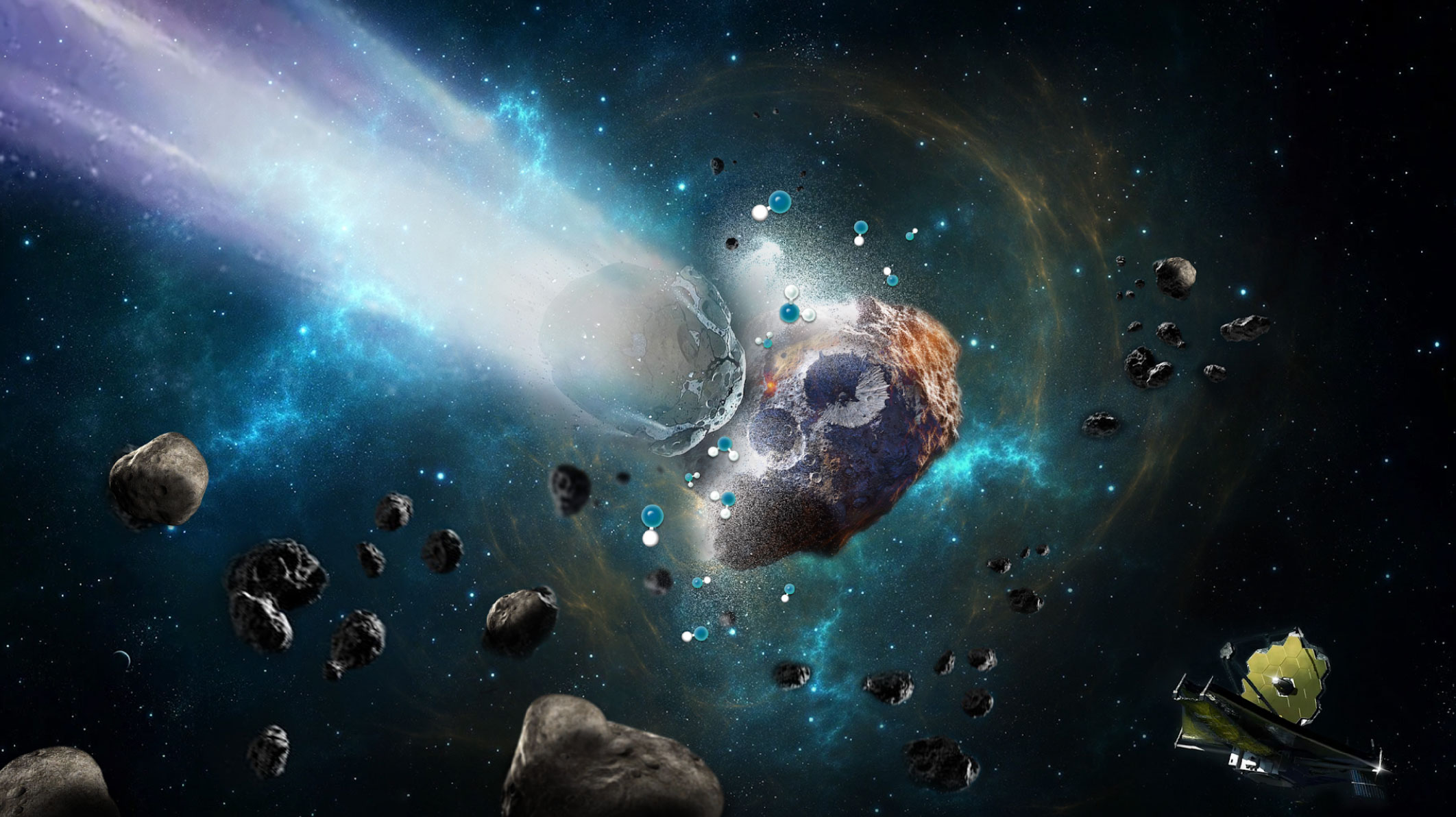Is asteroid Psyche actually a planetary core? James Webb Space Telescope results cast doubt
NASA's Psyche mission arrives at the asteroid in 2029, when it will get the chance to solve the mystery.

Hydrated minerals have paradoxically been found by the James Webb Space Telescope (JWST) on the surface of 16 Psyche, a metallic asteroid that's the target of a NASA mission that launched in October 2023. Hydroxyl and possibly water were identified on Psyche, and the substances may originate from impacts — but if such hydration came from inside the asteroid instead, that would change everything. It would mean we were wrong about Psyche.
16 Psyche, sometimes simply called Psyche, is a dense, metallic asteroid that is 280 kilometers (173 miles) across at its widest point and moves in a 378 million to 497-million-kilometer (235-million- to 309-million- mile) orbit around the sun. This places Psyche in the asteroid belt between Mars and Jupiter, between 2.5 and 3.3 times further from the sun than Earth is.
Psyche was chosen as a destination for NASA's mission because its high iron content flags the asteroid as a potential remnant core of a protoplanet that was smashed apart by collisions billions of years ago. It was protoplanets such as this that eventually accreted more mass and evolved into worlds such as Earth — so, by studying Psyche and asteroids of similar ilk, we can learn more about the beginnings of our own planet.
However, the JWST's discovery of hydrated minerals containing the molecule hydroxyl (OH, meaning one oxygen atom and one hydrogen atom) and possibly water (H20, or two hydrogen atoms and one oxygen atom) has added an extra layer of complexity to Psyche's history. The presence of hydroxyl within minerals is often a strong indicator that water is present, too.
Related: Jumping on an asteroid: How VR is being used to visit worlds we can never reach
One possibility is that these minerals were brought to Psyche by impacts with smaller carbonaceous chondrite asteroids that are known to contain substantial quantities of water. The other possibility, however, is that the hydration comes from within Psyche – and if that's the case, it changes everything we thought we knew about Psyche.
"Asteroids are leftovers from the planetary formation process, so their compositions vary depending on where they formed in the solar nebula," said Anicia Arredondo of the Southwest Research Institute in a statement. "Hydration that is endogenous [i.e. internal] could suggest that Psyche is not the remnant core of a protoplanet."
Breaking space news, the latest updates on rocket launches, skywatching events and more!
Instead, it might indicate that Psyche migrated to its current location from farther out, beyond what is called the "snow line." The solar system formed out of a protoplanetary disk, or a frisbee shaped disk around the young sun filled with dust, gas and ice. The snow line is a certain distance from the sun in this disk where temperatures would have been low enough for volatile gases, such as water and carbon dioxide, to freeze out as ice and become incorporated into the structure of any small bodies that formed out there. If true, this calls into question the true nature of Psyche — including how metallic it really is and whether it actually is a core remnant of a protoplanet.
However, the observations with the JWST's Near-Infrared Spectrometer (NIRSpec) indicate that the hydrated minerals are not evenly spread across the surface of Psyche. If the hydration was coming from inside the asteroid, we might expect its distribution to be more homogenous. So, that patchiness does suggest that random impacts may be the cause.
It will be up to the Psyche spacecraft to discover the final answer when it arrives at the asteroid in 2029. Ultimately, the findings could have a huge impact on our picture of how the planets formed.
"Our understanding of solar system evolution is closely tied to interpretations of asteroid composition, particularly the M-class [metallic] asteroids that contain higher concentrations of metal," said Stephanie Jarmak of the Harvard–Smithsonian Center for Astrophysics.
The analysis of the JWST's observations of Psyche are currently available as a pre-print and will be published in a future issue of the Planetary Science Journal.

Keith Cooper is a freelance science journalist and editor in the United Kingdom, and has a degree in physics and astrophysics from the University of Manchester. He's the author of "The Contact Paradox: Challenging Our Assumptions in the Search for Extraterrestrial Intelligence" (Bloomsbury Sigma, 2020) and has written articles on astronomy, space, physics and astrobiology for a multitude of magazines and websites.

